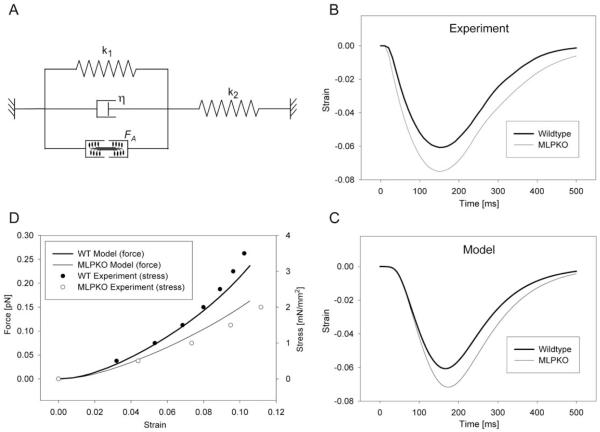Fig. 5.
Model of the shortening behavior from the unloaded length. (A) Four-element mathematical visco-elastic model of a contracting isolated muscle. The spring constant k1 and dashpot constant η represent the visco-elastic behavior of the shortening part of the muscle, spring constant k2 represents the lengthening muscle ends. The contractile force FA was prescribed using the average measured force. (B) Fitted experimental data of the time-course of shortening in wildtype and MLPKO trabeculae. (C) Model of a normal (wildtype) and an MLPKO shortening time-course. The two curves were produced using values for k1 taken directly from the passive stress–strain relationship. (D) Wormlike chain model of titin-based force in wildtype and knockout muscles, compared with the measured stress–strain relationship. For further details see text.

